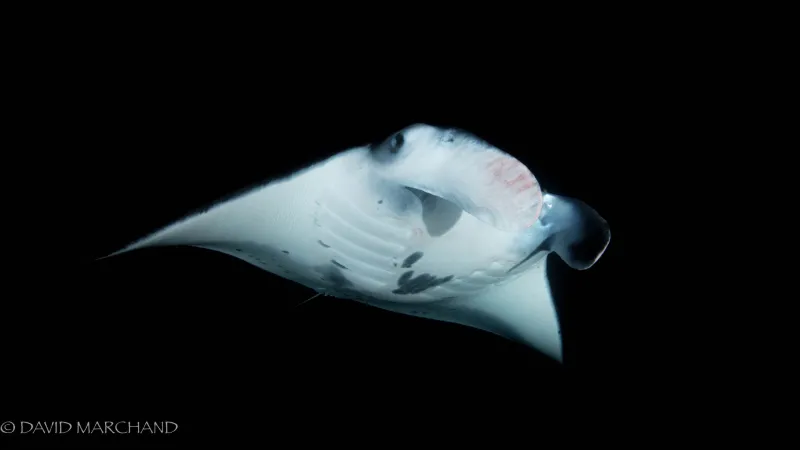
While Kona is home to many amazing animals and opportunities for many incredible dives, there is one that absolutely cannot be missed: the manta ray night dive! Consistently ranked as one of the top dives in the world and many consider it a highlight of their entire lives.
Manta rays are related to, but are not, sting rays. Manta rays are gentle giants- filter feeders with no barbs, stingers or teeth. With wingspans that can reach up to 18 feet across, they are among the largest fish in the sea.
The Kona Coast has a resident population and catalog of more than 200 reef manta rays (Mobula alfredi) and we have a unique way of observing them. As filter feeders, manta rays specialize in eating plankton. By waiting until after dark and putting bright dive lights on the ocean floor, we encourage plankton, which is attracted to light, to gather around our lights. This concentrates the mantas favorite food into a smaller area, making it easier for them to eat more with less effort! At the same time, it also encourages them to stay close to the lights where we can observe them.
Divers sit by the lights on the ocean floor while snorkelers float flat on the surface, leaving the water column open for mantas to swim and feed- often swimming directly over our divers heads or underneath our snorkelers’ bellies! When conditions are right (and they often are), it truly is like an underwater ballet with mantas gracefully performing loops, rolls and flips.
To join us as a diver, you must have Open Water Diver certification and recent dive experience (within the last 2 years), but it’s ok if this is your first night dive. With the amount of light in the water and the detailed briefing from our crew, it’s a great first night dive! We also provide an in-water guide for our snorkeling guests and snorkelers have their own flotation and light source to attract mantas on the surface.
During a 2-tank manta ray charter (our most popular manta ray charter), you get two dives, one in the late afternoon and one at night. We head up to Makako Bay, just north of Keahole Point and do both dives at the famous Garden Eel Cove. It’s not uncommon to have mantas start showing up during the afternoon dive! After dive one, get back on board for your surface interval, watch the sun set, and listen to your crew’s in-depth briefing about manta rays and specifics for the night dive.
The departure and return times of this charter revolve around sunset which varies seasonally throughout the year. Check our schedule for specific run times.
We are fortunate and see manta rays a vast majority of the time, regardless of the season. However, like all things in nature, sightings are never a guarantee. Manta rays are wild animals, free to come and go as they please. The plankton we rely on for this activity is naturally occurring and subject to unpredictable waxes and wanes. If the mantas do not show up on the night you are diving or snorkeling with us, we invite you to come back and try again for a discounted rate within a 12 month period. We recommend scheduling this charter earlier in your vacation- just in case conditions aren’t optimal or manta rays don’t show on your scheduled night.


